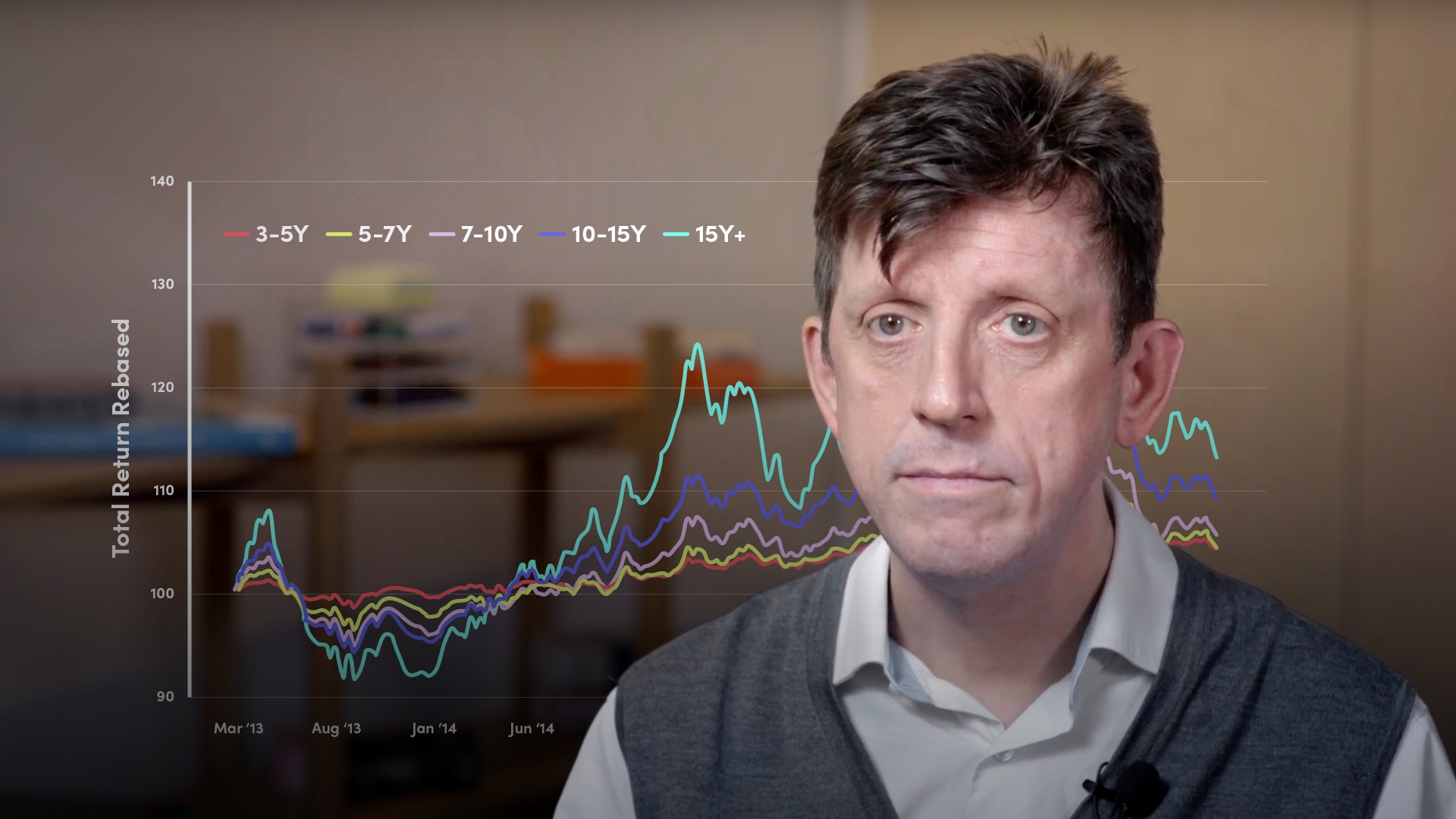
Managing Bond Price Volatility

Lindsey Matthews
30 years: Risk management & derivatives trading
Investors in bonds need to understand using yield as measure of potential returns, as part of managing the risks taken in a bond portfolio, in order generate a return. Lindsey will now build on that understanding to apply what you have learnt in the previous series to bond investments.
Investors in bonds need to understand using yield as measure of potential returns, as part of managing the risks taken in a bond portfolio, in order generate a return. Lindsey will now build on that understanding to apply what you have learnt in the previous series to bond investments.
Subscribe to watch
Access this and all of the content on our platform by signing up for a 7-day free trial.

Managing Bond Price Volatility
19 mins 58 secs
Key learning objectives:
Identify how to deal with butterfly trades
Explain the use of the repo market to fund positions
Understand the features and movements of the yield curve
Overview:
As an investor, it is of huge importance to consider what causes the prices of bonds to move, and how distinct bonds move differently. It is also critical to understand and interpret the yield curve as a measure of the volatility of your investment.
Subscribe to watch
Access this and all of the content on our platform by signing up for a 7-day free trial.
What does a bond’s maturity tell an investor?
The longer the duration of the bonds, the more the prices will move up and down. The longest maturity bonds generally have the greatest duration and thus move up and down for similar movements in yield. As an investor, buying the longest dated group will give you the bumpiest ride - the most volatility of the value of your investment. Hence it is clear, the longest dated bonds move around the most, and the shortest dated bonds move the least.What is duration, and what are some of its misconceptions?
Duration - is a measure of the bonds sensitivity to changes in the yield, but its volatility will also depend on the volatility of its yield - which, in turn, is driven by the volatility of the yield curve.
One of the most common misconceptions is that the duration of a bond is a “measure of the volatility of the bond’s price”. However, this is not the case. For example, you could have a bond with a very long duration, but where its yield hardly moves, in which case there will be very little volatility in the bond's price. Similarly, you could have a bond with a relatively short duration, but where its yield moves around a huge amount.
How does an investor express a view on the steepness of a curve?
If the investor suspects the curve is going to get flatter, so that the short end yields will rise more than the longer end (or long end yields fall more) then they should buy the long end and sell the short end.
And they should do it in a way that the portfolio will benefit from the relative movements in yields and not be affected by parallel shifts in the yield curve. Here is an example:
The longer end (5yr) is more sensitive to changes in interest rates, and thus, we need to buy less of the 5yr than we sell of the short end (1yr). Assume the following:
- PVBP 1 year = -0.009524
- PVBP 5 year - -0.041187
If we buy 100m 5yr, we should sell 432.45m 1 yr as the sensitivity of the 5yr is 4.32 times as much. If the curve moves in parallel we should be flat (close to zero P&L); if it flattens, we make money; if it steepens, we would lose.
What are the significant movements that are consistent across tenor points?
- Parallel Movement
- The curve moves in parallel, the same movements for every tenor point. This accounts for 70-80% of the movements in curves. And is also the mode of movement of the curve which is most often traded, or which investors most often express a view on - the general level of interest rates. Duration measures exposure to this most common mode of yield curve movement
- Steepening/Flattening Movement
- The curve moves most at the short end and the least at the long end. This accounts for another 10-15% of movements in curves. Many investors will express a view on the slope of the curve as this is very often regarded as being closely related to the market’s view of the future performance of the economy
- Twisting Movement
- For example, the yields drop at the 1yr and 10yr parts of the curve, but the 5yr yield moves up. This is also known as a butterfly movement
How do we deal with butterfly trades?
Butterfly trades are when there is a big trough in the curve. Let's assume an investor believes that the 5 year rate will increase relative to the 3 and 7 year rates, what trades should the investor do?
- Buy 3 year
- Sell 5 year
- Buy 7 year
How much of each bond should the investor trade?
We want the trade to be PVBP neutral so that it is immune to parallel shifts of the yield curve and cash neutral such that we minimise cash outlay. But risk will not be distributed equally between the two “wings” and we may be affected when the curve steepens or flattens. An alternative is, we could make it so that the PVBPs at the short and long ends are the same, but then it would not be cash neutral.How do we fund positions?
For the bonds we sell, as above for the steepener, we will need to borrow them through a repo trade. When we borrow the bonds, we deposit cash, on which we earn interest - at the repo rate. The repo rate we receive will be lower than we would earn on an unsecured deposit, as we have the bonds as collateral and we get to use them.
If we start with no money and no bonds, then this trade will also require us to borrow money to buy the long positions. This could similarly be done in the repo market, by borrowing money and depositing bonds as collateral.
How does the rate we pay differ for certain bonds?
- Similar attractiveness to be borrowed and lent in the repo market
- Then the rate we pay to borrow the money to buy the long position will be offset by the rate we earn on the money we deposit against the bonds we borrow.
- “Special” bonds
- Where there is a lot of demand to borrow the bond, then the rate earned on the money that is deposited against borrowing that bond will be lower - the cost of borrowing will be higher.
Subscribe to watch
Access this and all of the content on our platform by signing up for a 7-day free trial.

Lindsey Matthews
There are no available Videos from "Lindsey Matthews"



























